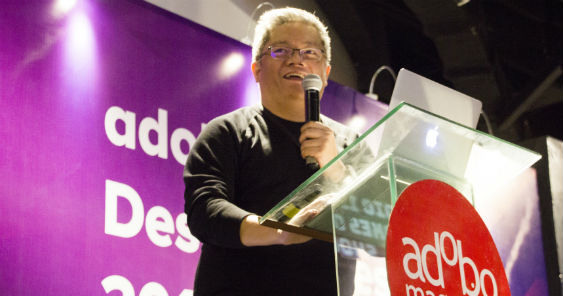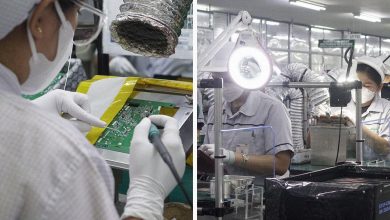At a time where radio is seen as a thing of the past, Joe Dy, McCann Worldgroup Philippines’ Executive Creative Director, talked about how we should instead leverage this channel and try experimenting on different radio elements to produce high quality radio advertisements. “The right words assembled in the right way can do more than tell stories. You can create a totally different experience,” said Dy at the recently concluded adobo Design Series Asia 2018 held at The Mind Museum last March 22.
Dy, the third speaker of the event, let the audience hear award-winning radio advertisements proving that finding the right message and the most arresting way to present it is a process of understanding what makes up radio’s creative element and collaboration.
More than entertainment, radio advertisements can create physical experience as well. It is based on the understanding that human experience—from one’s online and offline travels to social interactions, group affiliations, and thought processes—is a vast medium for advertising that can and should be approached strategically. Dy presented an example of this which is a radio advertisement by Ogilvy & Mather Group London for Dove titled, “BLINKING”.
This made listeners increasingly aware of their bodies, turning ordinary body actions and behavior they never gave a second thought to into something that was impossible to ignore, demonstrating how easily young girls can be influenced by the messages they’re exposed to every day.
Dy continued to tackle other radio elements such as the human voice. “The voice is actually capable of doing so many things depending on the choices you make,” he said. “It can show you different perspective just by different voice and different delivery.” Dy presented a radio advertisement titled “JUN JUN” created by J. Walter Thompson Manila for Kythe Foundation in Philippines.
In radio advertising, different sounds connote different meanings, leading the consumer to associate the commercial and the product it advertises with a variety of corresponding feelings. “Sound effects can also be the center of your idea not just the augmentation of your script,” said Dy.
Dy also discussed how advertisers can play with space and distance when recording for a radio advertisement. To further explain this, he went on to let the audience hear a radio advertisement titled “SHUTTER CHANCE” created by Dentsu Japan for Eos Kiss Digital Camera.
The product is communicated through the narration which has characters speaking with increasing quickness as the audio travels from the right speaker to the left. Each character describes a photograph they tried to take, leaving the impression that the subject of the photo was moving very fast and could only be captured thanks to the camera’s fast start-up time.
“Counterpart for silence is white space, a negative space, and you get to play with this when you do radio,” explained Dy. He showed some examples like “PRESS” created by McCann WorldGroup Philippines for Philippine Cancer Society to show how one can take advantage of silence in radio.
Press Radio from Matthew Crescenzo on Vimeo.
Before finalizing a radio advertisement, one should know the right commercial length to communicate the message properly and to adequately explain the product. Moreover, it can be a creative outlet in getting the message across. To give an example, Dy let the audience listen to BBDO Oslo’s radio advertisement titled “SHORTEST”—the world’s shortest radio ad, for Guinness Book of Records, of course.
When radio first took over everyone’s living rooms and cars, different jingles with catchy tunes promoting products from bologna to bananas were rampant. It was once so common, it can be hard to imagine a time before it existed. But for Dy, “there’s more to music on the radio than just jingles” and he showed Saatchi & Saatchi Copenhagen’s “LAST GIRL ON THE DANCEFLOOR” radio ad for Sprite Zero to prove just that.
In an era where we are constantly bombarded by sounds, it’s not so hard to consider the potential of the radio landscape. By engaging multiple senses of a viewer, companies can more effectively promote their products or messages. Moreover, sounds have the power to affect a consumer’s emotion, buying habits, and memory recall, proving how important it is to understand how radio makes an audience feel.
The talk of Joe Dy only explained that in a society where television commercial is the norm, it is important to find new ways to tell a story. Because when there is a deviation from the norm, there is a call to attention.
Watch the full session here:










